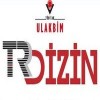A549 Akciğer Kanseri Hücrelerinde Shilajit'in Antioksidan Potansiyeli ve Kemoterapi Modüle Edici Etkileri
Abstract
Amaç: Bu çalışmada, doğal bir humik madde olan shilajit'in insan akciğer adenokarsinom hücre hattı (A549) üzerindeki antioksidan ve kemoterapi modüle edici etkileri araştırılmıştır.
Gereç-Yöntem: Shilajit ekstraktları (su ve DMEM çözücülü) A549 hücrelerine tek başına ve etoposid (IC₅₀ = 42,54 µg/mL) ile sisplatin (IC₅₀ = 6,44 µg/mL) kombinasyonu halinde uygulanmıştır. Hücre canlılığı MTT yöntemi ile ölçülmüş, antioksidan aktivite ise DPPH radikal süpürme testi kullanılarak değerlendirilmiştir.
Bulgular: MTT testi sonuçlarına göre, shilajit'in tek başına uygulandığında hücre canlılığını anlamlı düzeyde artırdığı, ancak etoposid ve sisplatin ile kombinasyon halinde uygulandığında bu ajanların sitotoksik etkilerini azalttığı bulunmuştur. Bu durum, shilajit'in mitokondriyal aktiviteyi artırıcı ve oksidatif stresi baskılayıcı özellikleriyle ilişkili olabilir. Antioksidan aktivite için IC₅₀ değeri, su ekstraktı için 1,10 mg/mL ve metanol ekstraktı için 1,32 mg/mL olarak hesaplanmıştır. Pozitif kontroller olan BHA ve BHT için IC₅₀ değerleri sırasıyla 0,023 ve 1,88 mg/mL bulunmuştur. Shilajit'in her iki ekstrakt formu da doza bağımlı bir antioksidan etki göstermiş, ancak sentetik antioksidanlara kıyasla daha düşük bir aktivite sergilemiştir.
Sonuç: Elde edilen sonuçlar, shilajit'in hücre koruyucu ve antioksidan özelliklere sahip olduğunu göstermektedir. Ancak kemoterapötik ajanlarla birlikte kullanıldığında dikkatli olunması gerektiği belirtilmektedir. Bazı durumlarda shilajit'in, kemoterapiye karşı hücresel direnç mekanizmalarını aktive etme potansiyeline sahip olabileceği düşünülmektedir.
Project Number
-
References
- Sung H, Ferlay J, Siegel RL, et al. Global Cancer Statistics 2020: GLOBOCAN estimates of incidence and mortality worldwide for 36 cancers in 185 countries. CA Cancer J Clin. 2021;71(3):209-249.
- Zappa C, Mousa SA. Non-small cell lung cancer: current treatment and future advances. Transl Lung Cancer Res. 2016;5(3):288-300.
- Howlader N, Forjaz G, Mooradian MJ, et al. The effect of advances in lung-cancer treatment on population mortality. N Engl J Med. 2020;383(7):640-649.
- Schabath MB, Cote ML. Cancer progress and priorities: lung cancer. Cancer Epidemiol Biomarkers Prev. 2019;28(10):1563-1579.
- Litwiniec A, Gackowska L, Helmin-Basa A, Zuryń A, Grzanka A. Low-dose etoposide-treatment induces endoreplication and cell death accompanied by cytoskeletal alterations in A549 cells: Does the response involve senescence? The possible role of vimentin. Cancer Cell Int. 2013;13(1):9.
- Arfin S, Jha NK, Jha SK, et al. Oxidative stress in cancer cell metabolism. Antioxidants (Basel). 2021;10(5):642.
- Jafari M, Forootanfar H, Ameri A, et al. Antioxidant, cytotoxic and hyperalgesia-suppressing activity of a native Shilajit obtained from Bahr Aseman mountains. Pak J Pharm Sci. 2019;32(5):2167-2173.
- Wilson E, Rajamanickam GV, Dubey GP, et al. Review on shilajit used in traditional Indian medicine. J Ethnopharmacol. 2011;136(1):1-9.
- Carrasco-Gallardo C, Guzmán L, Maccioni RB. Shilajit: a natural phytocomplex with potential procognitive activity. Int J Alzheimers Dis. 2012;2012:674142.
- Schepetkin I, Khlebnikov A, Kwon BS. Medical drugs from humus matter: Focus on mumie. Drug Dev Res. 2002;57(3):140-159.
- Al-Shudiefat AA-RS, Alzyoud JA. Shilajit (Mumie) a natural product with antihyperglycemic, anti-obesity, anti-oxidant, and antiinflammatory properties for a potential treatment of diabetes mellitus. Jordan J Biol Sci. 2024;17(1):109-122.
- Kangari P, Roshangar L, Iraji A, Talaei-Khozani T, Razmkhah M. Accelerating effect of Shilajit on osteogenic property of adipose-derived mesenchymal stem cells (ASCs). J Orthop Surg Res. 2022;17(1):424.
- Pingali U, Nutalapati C. Shilajit extract reduces oxidative stress, inflammation, and bone loss to dose-dependently preserve bone mineral density in postmenopausal women with osteopenia: A randomized, double-blind, placebo-controlled trial. Phytomedicine. 2022;105:154334.
- Bhattacharyya S, Pal D, Banerjee D, et al. Shilajit dibenzo-α-pyrones: mitochondria targeted antioxidants. Pharmacologyonline. 2009;2:690-698.
- Rajpoot A, Yadav K, Yadav A, Mishra RK. Shilajit mitigates chemotherapeutic drug-induced testicular toxicity: Study on testicular germ cell dynamics, steroidogenesis modulation, and Nrf-2/Keap-1 signaling. J Ayurveda Integr Med. Jul-Aug 2024;15(4):100930.
- Jambi EJ, Abdulaziz Alshubaily F. Shilajit potentiates the effect of chemotherapeutic drugs and mitigates metastasis induced liver and kidney damages in osteosarcoma rats. Saudi J Biol Sci. 2022;29(9):103393.
- Kececi M, Akpolat M, Gulle K, Gencer E, Sahbaz A. Evaluation of preventive effect of shilajit on radiation-induced apoptosis on ovaries. Arch Gynecol Obstet. 2016;293(6):1255-1262.
- Moghadari M, Rezvanipour M, Mehrabani M, Ahmadinejad M, Tajadini H, Hashempur MH. Efficacy of mummy on healing of pressure ulcers: A randomized controlled clinical trial on hospitalized patients in intensive care unit. Electron physician. 2018;10(1):6140-6147.
- Azizi S, Kheirandiah R, Azari O, Torabi N. Potential pharmaceutic effect of Shilajit (mumie) on experimental osteoarthritis in rat. Comp Clin Path. 2018;27(3):755-764.
- Patil SG, Patil KA, Sarashetti R, Hadimur K. Effect of purified Shilajit (Asphaltum punjabianum) on oxidative stress, arterial stiffness and endothelial function in elderly with hypertension: A randomised controlled study. Indian J Physiol Pharmacol. 2023;67(3):197-204.
- Kordestani Z, Melki E, Vahidi R, et al. Modulation of IKK/NF-κB Signaling: A therapeutic mechanism of shilajit in breast cancer cells. J Kerman Univ Med Sci. 2024;31(2):66-71.
- Rahmani Barouji S, Shahabi A, Torbati M, Fazljou SMB, Yari Khosroushahi A. Mummy Induces Apoptosis Through Inhibiting of Epithelial-Mesenchymal Transition (EMT) in Human Breast Cancer Cells. Galen Med J. 2020;9:e1812.
- Alqarni A, Hosmani J, Mohammed R, et al. Shilajit (Mumio) elicits apoptosis and suppresses cell migration in oral cancer cells through targeting urokinase-type plasminogen activator and its receptor and chemokine signaling pathways. Pharmacogn Mag. 2024;21(2):491-506.
- Kloskowski T, Szeliski K, Krzeszowiak K, et al. Mumio (Shilajit) as a potential chemotherapeutic for the urinary bladder cancer treatment. Sci Rep. 2021;11(1):22614.
- Perumal P, Sathakkathulla NA, Kumaran K, et al. Green synthesis of zinc oxide nanoparticles using aqueous extract of shilajit and their anticancer activity against HeLa cells. Sci Rep. 2024;14(1):2204.
- Asadi Z, Jalilian S, Arkan E, Aghaz F. How Shilajit-based nanocarriers alter classical doxorubicin delivery to breast cancer cells (MCF-7 and ZR-75-1). ACS Med Chem Lett. 2024;15(4):449-456.
Abstract
Objective: In this study, the antioxidant and chemotherapy-modulating effects of shilajit, a natural humic substance, on the human lung adenocarcinoma cell line (A549) were investigated.
Material-Method: Shilajit extracts (water and DMEM solvent) were applied to A549 cells alone and in combination with etoposide (IC₅₀ = 42.54 µg/mL) and cisplatin (IC₅₀ = 6.44 µg/mL). Cell viability was measured by the MTT method, and the antioxidant activity was evaluated using the DPPH radical scavenging assay.
Results: As a result of the MTT test, shilajit alone was found to significantly increase cell viability, while in combination with etoposide and cisplatin it reduced the cytotoxic effects of these agents. This may be related to the mitochondrial activity enhancing and oxidative stress suppressing properties of shilajit. The IC₅₀ value for antioxidant activity was calculated as 1.10 mg/ml for the water extract and 1.32 mg/ml for the methanol extract of shilajit. The IC₅₀ values for the positive controls BHA and BHT were 0.023 and 1.88 mg/mL, respectively. Both extract forms of shilajit showed a dose-dependent antioxidant effect, but exhibited lower activity compared to synthetic antioxidants.
Conclusion: The results suggest that shilajit has cell-protective and antioxidant properties, but caution is advised when used in combination with chemotherapeutic agents. There is a possibility that in some cases shilajit activates cellular resistance mechanisms to chemotherapy.
Keywords
Ethical Statement
Not applicable.
Supporting Institution
-
Project Number
-
Thanks
-
References
- Sung H, Ferlay J, Siegel RL, et al. Global Cancer Statistics 2020: GLOBOCAN estimates of incidence and mortality worldwide for 36 cancers in 185 countries. CA Cancer J Clin. 2021;71(3):209-249.
- Zappa C, Mousa SA. Non-small cell lung cancer: current treatment and future advances. Transl Lung Cancer Res. 2016;5(3):288-300.
- Howlader N, Forjaz G, Mooradian MJ, et al. The effect of advances in lung-cancer treatment on population mortality. N Engl J Med. 2020;383(7):640-649.
- Schabath MB, Cote ML. Cancer progress and priorities: lung cancer. Cancer Epidemiol Biomarkers Prev. 2019;28(10):1563-1579.
- Litwiniec A, Gackowska L, Helmin-Basa A, Zuryń A, Grzanka A. Low-dose etoposide-treatment induces endoreplication and cell death accompanied by cytoskeletal alterations in A549 cells: Does the response involve senescence? The possible role of vimentin. Cancer Cell Int. 2013;13(1):9.
- Arfin S, Jha NK, Jha SK, et al. Oxidative stress in cancer cell metabolism. Antioxidants (Basel). 2021;10(5):642.
- Jafari M, Forootanfar H, Ameri A, et al. Antioxidant, cytotoxic and hyperalgesia-suppressing activity of a native Shilajit obtained from Bahr Aseman mountains. Pak J Pharm Sci. 2019;32(5):2167-2173.
- Wilson E, Rajamanickam GV, Dubey GP, et al. Review on shilajit used in traditional Indian medicine. J Ethnopharmacol. 2011;136(1):1-9.
- Carrasco-Gallardo C, Guzmán L, Maccioni RB. Shilajit: a natural phytocomplex with potential procognitive activity. Int J Alzheimers Dis. 2012;2012:674142.
- Schepetkin I, Khlebnikov A, Kwon BS. Medical drugs from humus matter: Focus on mumie. Drug Dev Res. 2002;57(3):140-159.
- Al-Shudiefat AA-RS, Alzyoud JA. Shilajit (Mumie) a natural product with antihyperglycemic, anti-obesity, anti-oxidant, and antiinflammatory properties for a potential treatment of diabetes mellitus. Jordan J Biol Sci. 2024;17(1):109-122.
- Kangari P, Roshangar L, Iraji A, Talaei-Khozani T, Razmkhah M. Accelerating effect of Shilajit on osteogenic property of adipose-derived mesenchymal stem cells (ASCs). J Orthop Surg Res. 2022;17(1):424.
- Pingali U, Nutalapati C. Shilajit extract reduces oxidative stress, inflammation, and bone loss to dose-dependently preserve bone mineral density in postmenopausal women with osteopenia: A randomized, double-blind, placebo-controlled trial. Phytomedicine. 2022;105:154334.
- Bhattacharyya S, Pal D, Banerjee D, et al. Shilajit dibenzo-α-pyrones: mitochondria targeted antioxidants. Pharmacologyonline. 2009;2:690-698.
- Rajpoot A, Yadav K, Yadav A, Mishra RK. Shilajit mitigates chemotherapeutic drug-induced testicular toxicity: Study on testicular germ cell dynamics, steroidogenesis modulation, and Nrf-2/Keap-1 signaling. J Ayurveda Integr Med. Jul-Aug 2024;15(4):100930.
- Jambi EJ, Abdulaziz Alshubaily F. Shilajit potentiates the effect of chemotherapeutic drugs and mitigates metastasis induced liver and kidney damages in osteosarcoma rats. Saudi J Biol Sci. 2022;29(9):103393.
- Kececi M, Akpolat M, Gulle K, Gencer E, Sahbaz A. Evaluation of preventive effect of shilajit on radiation-induced apoptosis on ovaries. Arch Gynecol Obstet. 2016;293(6):1255-1262.
- Moghadari M, Rezvanipour M, Mehrabani M, Ahmadinejad M, Tajadini H, Hashempur MH. Efficacy of mummy on healing of pressure ulcers: A randomized controlled clinical trial on hospitalized patients in intensive care unit. Electron physician. 2018;10(1):6140-6147.
- Azizi S, Kheirandiah R, Azari O, Torabi N. Potential pharmaceutic effect of Shilajit (mumie) on experimental osteoarthritis in rat. Comp Clin Path. 2018;27(3):755-764.
- Patil SG, Patil KA, Sarashetti R, Hadimur K. Effect of purified Shilajit (Asphaltum punjabianum) on oxidative stress, arterial stiffness and endothelial function in elderly with hypertension: A randomised controlled study. Indian J Physiol Pharmacol. 2023;67(3):197-204.
- Kordestani Z, Melki E, Vahidi R, et al. Modulation of IKK/NF-κB Signaling: A therapeutic mechanism of shilajit in breast cancer cells. J Kerman Univ Med Sci. 2024;31(2):66-71.
- Rahmani Barouji S, Shahabi A, Torbati M, Fazljou SMB, Yari Khosroushahi A. Mummy Induces Apoptosis Through Inhibiting of Epithelial-Mesenchymal Transition (EMT) in Human Breast Cancer Cells. Galen Med J. 2020;9:e1812.
- Alqarni A, Hosmani J, Mohammed R, et al. Shilajit (Mumio) elicits apoptosis and suppresses cell migration in oral cancer cells through targeting urokinase-type plasminogen activator and its receptor and chemokine signaling pathways. Pharmacogn Mag. 2024;21(2):491-506.
- Kloskowski T, Szeliski K, Krzeszowiak K, et al. Mumio (Shilajit) as a potential chemotherapeutic for the urinary bladder cancer treatment. Sci Rep. 2021;11(1):22614.
- Perumal P, Sathakkathulla NA, Kumaran K, et al. Green synthesis of zinc oxide nanoparticles using aqueous extract of shilajit and their anticancer activity against HeLa cells. Sci Rep. 2024;14(1):2204.
- Asadi Z, Jalilian S, Arkan E, Aghaz F. How Shilajit-based nanocarriers alter classical doxorubicin delivery to breast cancer cells (MCF-7 and ZR-75-1). ACS Med Chem Lett. 2024;15(4):449-456.
Details
| Primary Language | English |
|---|---|
| Subjects | Phytotherapy |
| Journal Section | Research Articles |
| Authors | |
| Project Number | - |
| Publication Date | August 27, 2025 |
| Submission Date | April 28, 2025 |
| Acceptance Date | July 22, 2025 |
| Published in Issue | Year 2025 Volume: 6 Issue: 2 |
IJTCMR
International Journal of Traditional and Complementary Medicine Research





